
The Everest Base Camp trek is one of the most popular treks in the world and is an 11-day journey to the Base Camp of the pinnacle of climbing. Mt Everest along with being the highest mountain in the world also has the highest base camp in the world. At 5,363 metres, the Everest Base Camp trek is a serious trek. The trek also has several amenities and creature comforts that make the trek more enjoyable.
How hard is the Everest Base Camp trek?
This is a question we get asked a lot. The Everest Base Camp trek is long and has its own set of challenges, that being said it is a doable trek. By doable I mean that people with limited experience can complete the trek successfully. All they need is a little training of around 2-3 months.
Everest Base Camp also has the benefit of being one of the few treks with world-class amenities. While on the trek, you’ll be staying in comfortable tea houses with delicious food, Western Loos and internet connectivity. In this blog. I will be addressing some of the amenities that you can avail while on the trek. The fitness required for The Everest Base Camp can be found here.
What is a Tea House?
A Tea House is a lodge-style of accommodation that is popular in Nepal, especially Everest Base Camp. These lodges are where you will spend the night while on the trek. Tea Houses were initially set up to provide tea to trekkers on the trail. Gradually, over time, they converted their modest stalls to lodges which also provide accommodation to trekkers. On the 11 days in the Khumbu Valley, we’ll be staying several different Tea Houses and each tea house has its own charm and speciality.
The Rooms
The rooms in the tea houses are usually on a double sharing basis. Each room has two single beds with a comfortable mattress and blanket. (Remember: Everything in the valley is flown in and carried on Djopgyos). These rooms have wooden floors and plywood walls. In the tea houses up the valley, sleeping in a sleeping bag with the blanket drawn over is a foolproof way to stay warm.
Loos and Bathing Facilities
All tea houses have fixed loos with an Indian and Western Commode. The loos are usually in a dormitory-style i.e. each floor has a common area with multiple loos. An option of attached bathrooms is also available in some tea houses. Please contact us before your trek if you wish to book tea houses with this facility.
Most tea houses also have a shower area where you can have a hot shower. The shower facility must be purchased directly from the tea House Manager. Powered by gas heaters, the water available is perfect for a good shower. The price for a shower on average is NRS 300. We advise to take shower up till Namche as having a shower after a long day of trekking can bring rapid temperature changes and put you at risk of catching a cold.
Pro tip: having a shower after you come back from Everest Base Camp to Namche Bazar elevates the showering experience and you can head to the Irish Pub smelling fresh.

Food and the Dining Area
On the Everest Base Camp Trek, it is important to have carbohydrate-rich food as you’ll be walking for close to 6 hours a day and burning upwards of 2000 calories a day. At the Tea Houses that you’ll be spending the night at, you’ll have a choice of a vast array of food choices.
For Breakfast, you can choose between a large menu with omelettes, fried egg, hash browns, oat porridge being the most popular. Accompanied with some hot tea, coffee or ginger lemon tea.
Lunch is usually had on the trail and consists of either Fried rice, noodles or Dal Bhat Tarkari, a local ‘Thali’ of Dal, Rice and Sabji.

Dinner is back at the next tea house and the popular items range from Fried Rice, Momos, Pasta, Pizza to garlic soup. Grabbing an Everest Beer or a glass of Kukhri with Tatho Paani (Local brand of rum with hot water) is the best way to celebrate a long day of trekking.
Each Tea House offers a large menu and allows you to order what you want so you can feel at home. Eating a Pizza at 5000 metres is our favourite part of the trek. We would recommend avoiding eating meat after Namche Bazaar and stick to the basics Like Dal Baath Tarkari (DBT) as it’s harder for your stomach to digest meat at altitude.
All your meals will be provided in a common dining area in each Tea House. This is the main gathering area of everyone staying at the tea house and people often spend hours here, satiating on the warmth of the Bhukari (A wood-based room heater). After your meal, you can enjoy a game of cards, board games or unwind by reading your favourite book in the lap of tallest mountains in the world. The wood room, with a central Bhukari and a small bar, is synonymous with the Everest Base Camp Trek and is the place where you’ll get a chance to interact with like-minded travelers from around the world.
Electricity and Charging Options
In the common areas, rooms and Washrooms, electricity is available, and you won’t have to use your headlamp to navigate the tea houses. This electricity is generated through solar panels and hydroelectricity with the help of micro-turbines powered by the streams that feed the Dudh Kosi.
Low on battery? Charging points are available all through the trek. Like the showers, this can be purchased from the Tea House Manager. You can get your mobile, power banks and cameras charged. On Average, it costs around NRS 200 (Nepali Rupee) per device. You can also carry a solar charger to charge your electronics on the trail. These are easily available on Amazon.
Wifi and Internet facilities
In Kathmandu, the hotel will provide you with free Wifi that can be used at your discretion. On the Everest Base Camp Trek, Wifi is available in all the tea houses on the route in the form of Everest Link cards. To use the internet, you will have to purchase a card from the tea house. The card will provide you with a code that will allow you to use the internet.
Internet speeds vary from location to location. Your Email, Whatsapp, Instagram and Facebook work decently well for the most part. Video calling is a little iffy but works alright up to Debouche. The cost of the Everest Link Cards varies from location to location. Wifi is also available at the various bakeries and pubs on the way. You can purchase the cards based on the duration of use with options such as 1 hour and 10 hours or based on data, such as 100MB and 1GB. There has been some news that the Nepal Authorities are planning on providing free wifi; this has not come into effect yet.
Phone network and calling
Phone network and calling is another luxury that the Everest Base Camp trek provides. You can purchase an NCell sim card from the airport as you land. There is a counter beside the arrival hall in the airport. After handing a copy of your passport and a fee of INR 200, you can pick up a Nepali Sim Card. There are varying packages and works like Indian Pre-paid services. In Kathmandu, 4G is available in most parts. The network is as good as you’ll find it in Big Indian Cities such as Delhi and Mumbai (good or bad we’ll leave it on you).
On The trek, you’ll have good signal and 4G up to Namche. En route, it may lose signal but overall, it is pretty good. From Namche, the signal starts to fade but is still moderately good. The signal dies ahead of Dingboche. So overall, you should have a strong signal for 3 days and average signal for another 3.
I forgot my jacket; can I pick one up on the way?
That happens more often than you think. Luckily, we’ve got you covered. The Everest Base Camp trek is one of those treks that happen to have an official The North Face Store, along with multiple multi-brand stores. You’ll hit these stores at Namche Bazaar. You can also get a limited-edition Namche T-shirt from The North Face store.
At the Multi-brand stores, the quality of the gear is very good; with brands such as Black Diamond and Kathmandu make sure that you’re warm always. You also have an option of purchasing excellent gear at Kathmandu. We’ll be happy to help you look for gear and point you to the best stores for any budget.

Pubs, bakeries and more
You can spend your acclimatization day back at Namche relaxing in the Irish Pub, which is the highest Irish Pub in the world. Grab a beer, or play some foosball, the Irish pub is the place to be while on the trek. Their signature shots, the Diamox is one of the most popular drinks in the Khumbu Valley and is the perfect way to celebrate the end of your trek.
There are also many bakeries en route to Everest Base Camp. Personally, our favourite is the Namche Bakery. The apple pie is the best we’ve had. Sweet delicacies are also available at the Tengboche Bakery. There are also many Cafés en route. The last one being at Dingboche: Café 4410 is a remarkable place right at the foot of Ama Dablam.
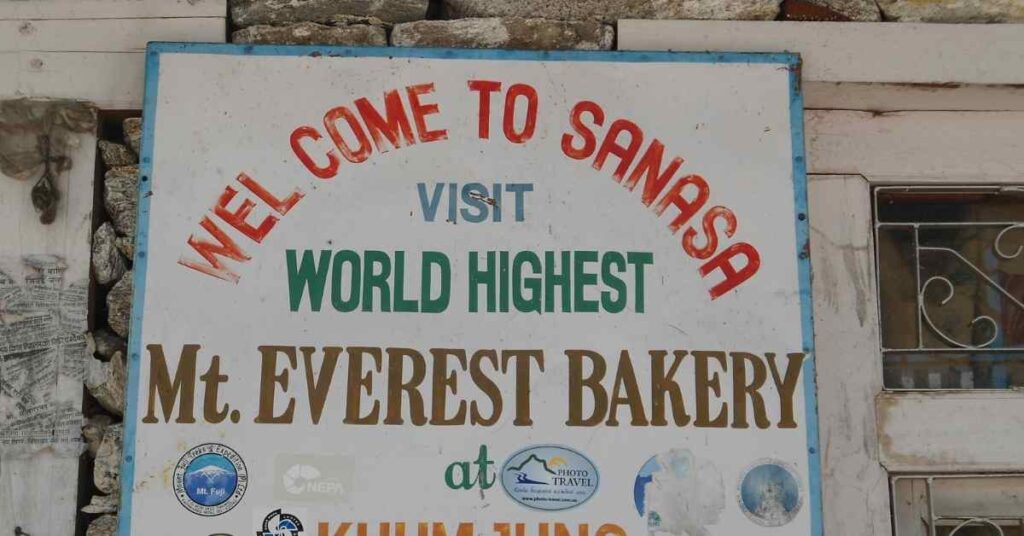
Clinics and Medical Aid while on the Everest Base Camp Trek
The Himalayan Rescue Association is a non-profit started in 1973 to reduce causalities in the Nepal Himalayas. They have Aid Posts at two places; namely, Pheriche and Manang. The posts are run by medical professions who volunteer their time and experience to ensure the safety of trekkers making the journey up the mountains. In case of a medical emergency, your guide will do a preliminary check and apply first aid. We’ll then arrange for a pony to transport the patient to the nearest tea house. The situation will then be assessed again and evacuation will be arranged.
Helicopter on call
In certain scenarios, especially medical emergencies helicopter evacuation is the quickest way to provide aid to someone. Helicopters fly up and down the valley and in emergencies, your guide will arrange an evacuation to Kathmandu. Insurance helps mitigate the cost of an evacuation. In bad weather, there might be some delays. The helicopter can also be called to transport you back to Lukla or Kathmandu if in case you do not wish to continue the trek. The price for the Helicopter ranges from USD 500-800 per head (on sharing basis) and may cost up to USD 2500-3000 for a full helicopter charter depending on where you take it from.

Should I purchase Insurance?
Insurance is something we do not include in our prices. We leave it to personal preference. Several companies provide insurance specifically for High-Altitude Trekking. We recommend World Nomads. This is an insurance provider that our clients have used and have a positive track history. The price on average ranges from USD 50-100. Several Indian Companies also provide trekking and evacuation insurance. Before buying your policy, make sure you go through the details and that they cover helicopter evacuation and treks above 5000 metres.
The Everest Base Camp Trek is a personal favourite as it is an excellent combination of raw nature with great amenities. We meet trekkers who recall their experiences from the trek even after a decade. To know more about our Everest Base Camp Trek, please feel free to contact us at [email protected]

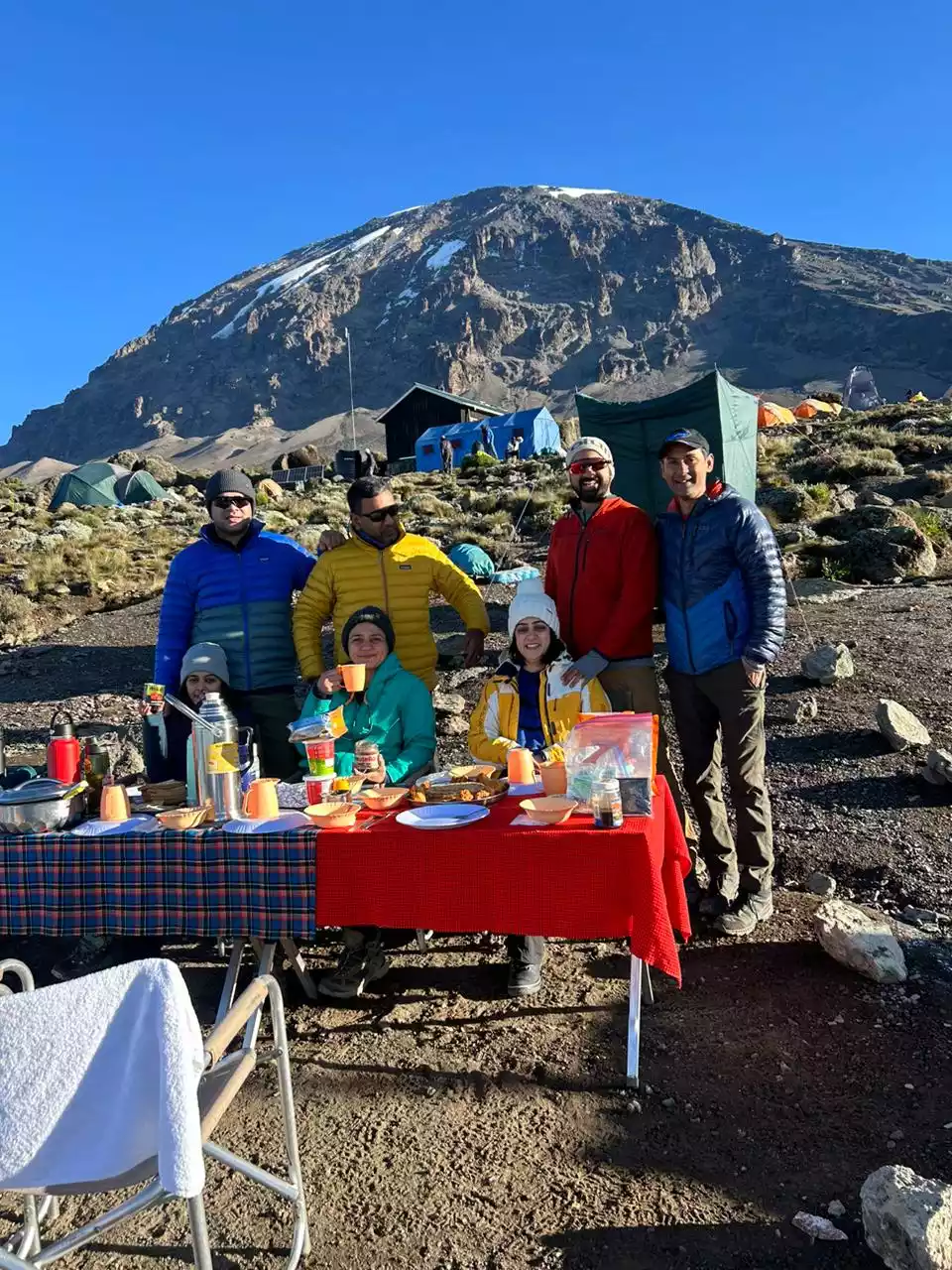
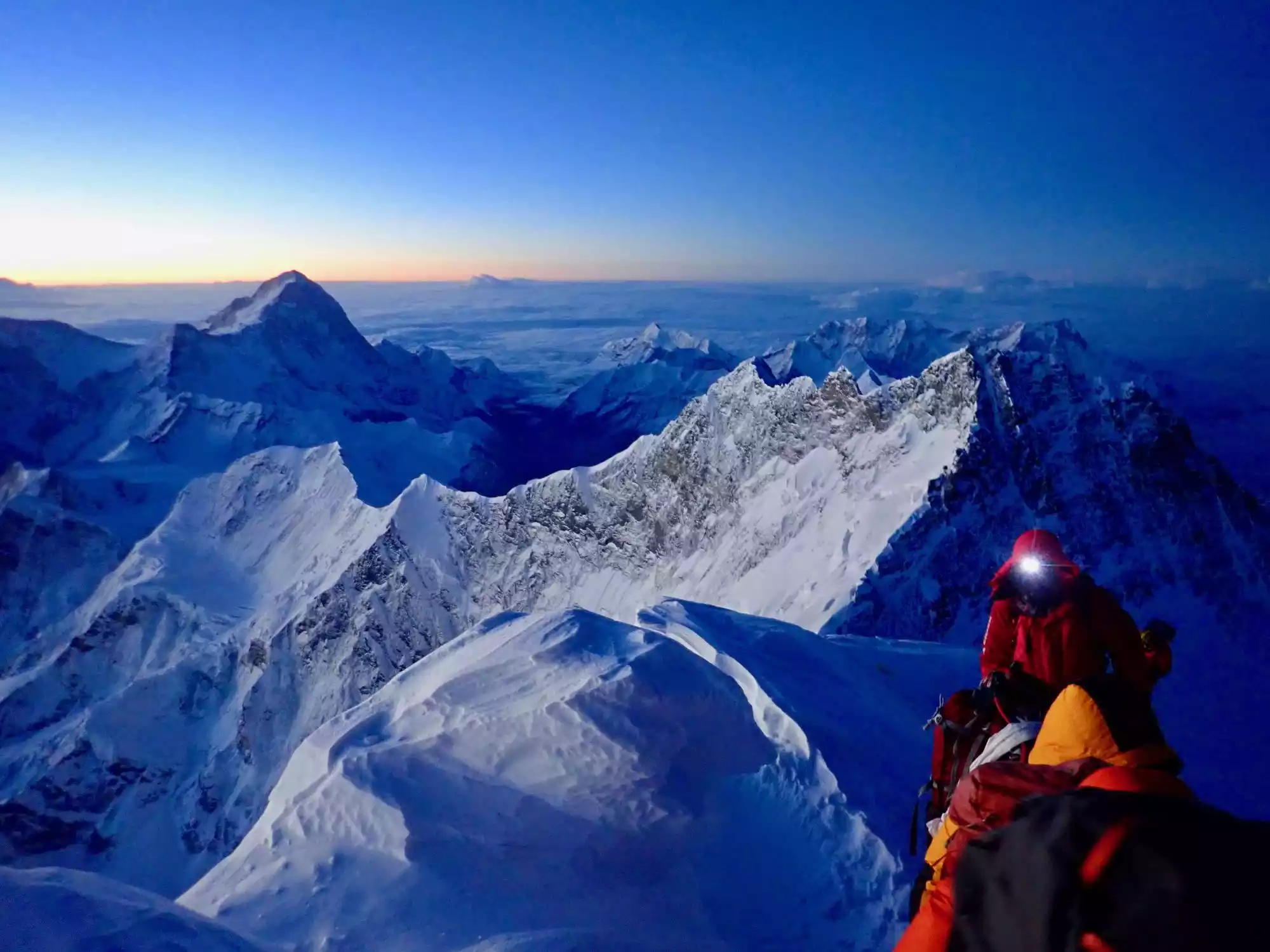
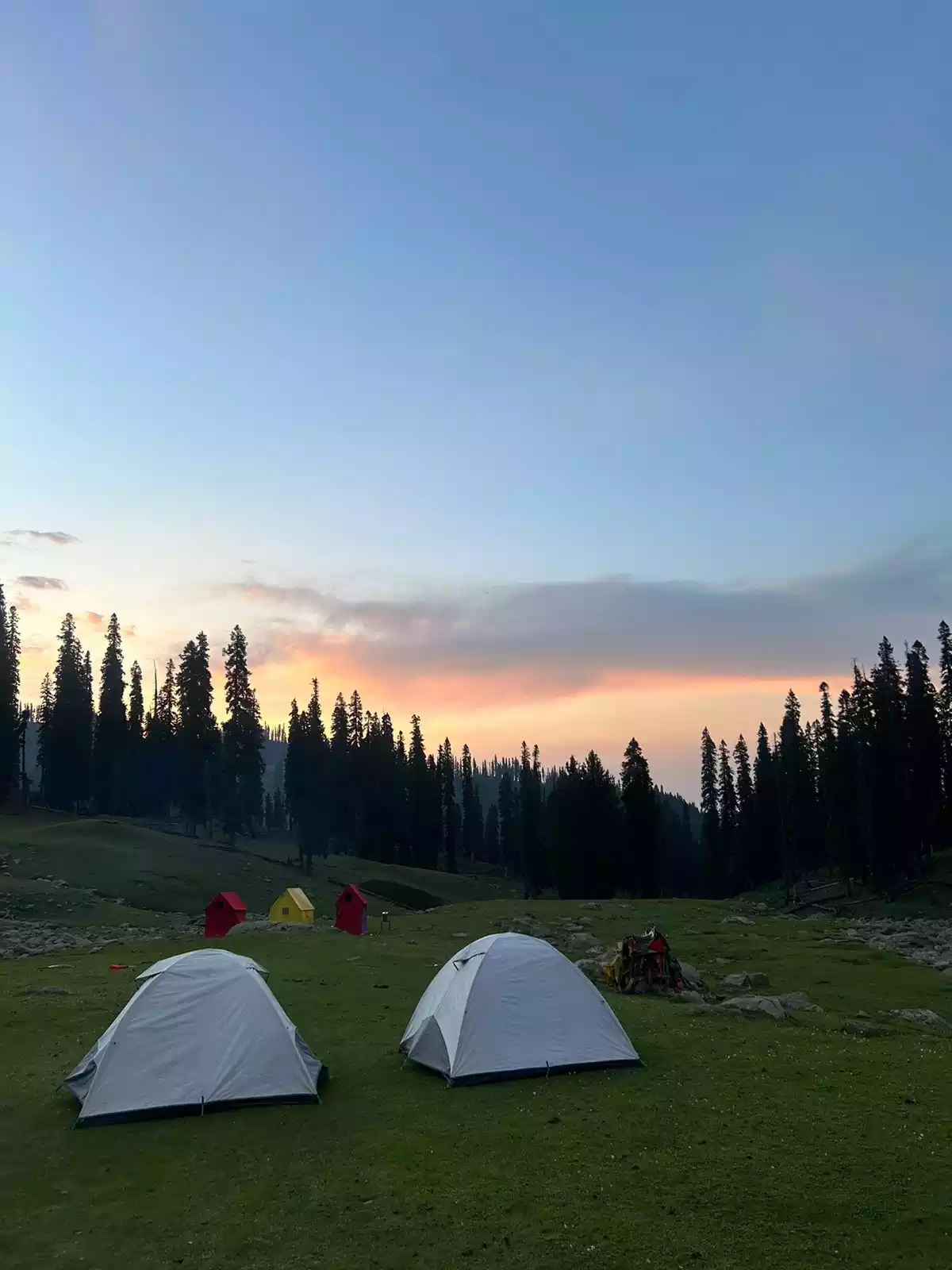
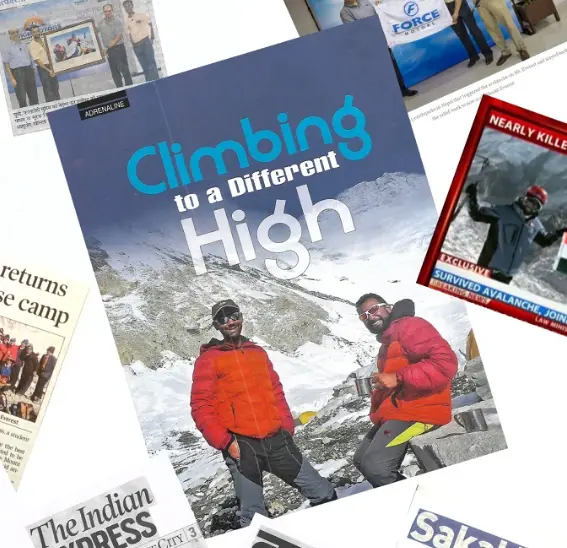
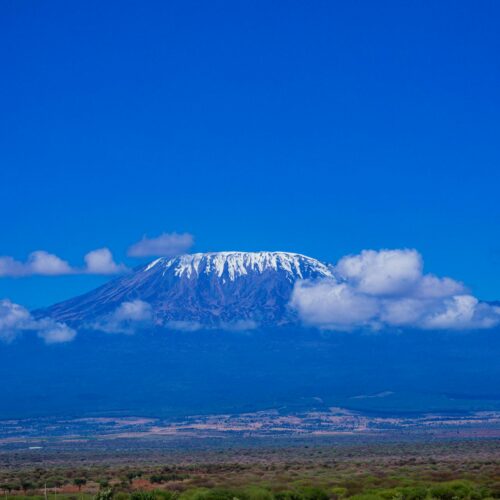


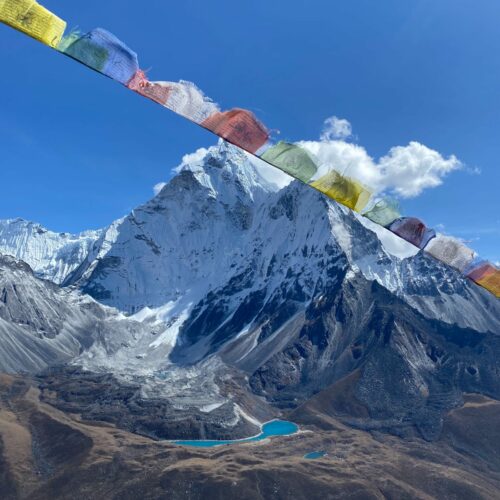



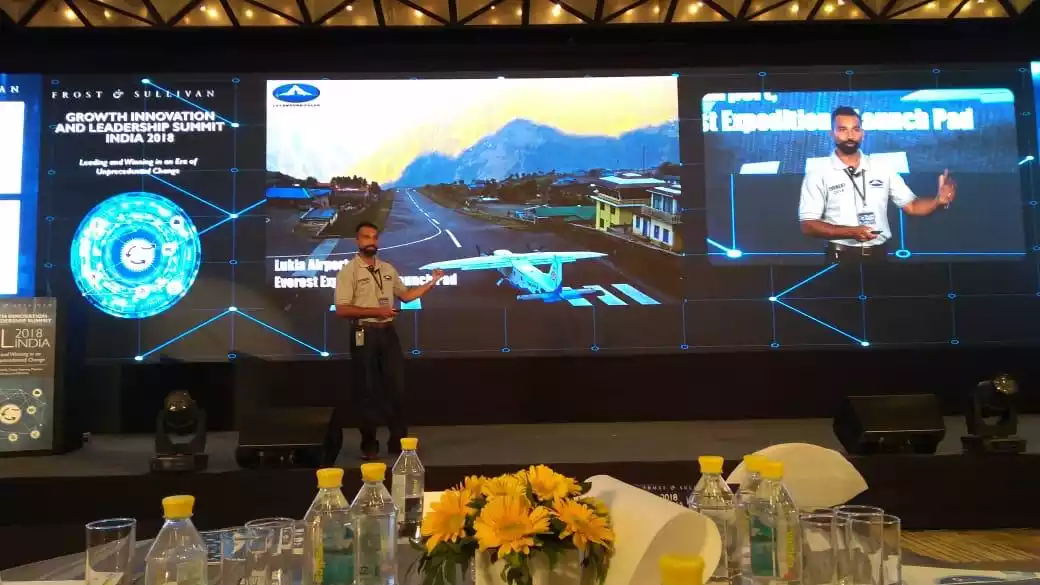
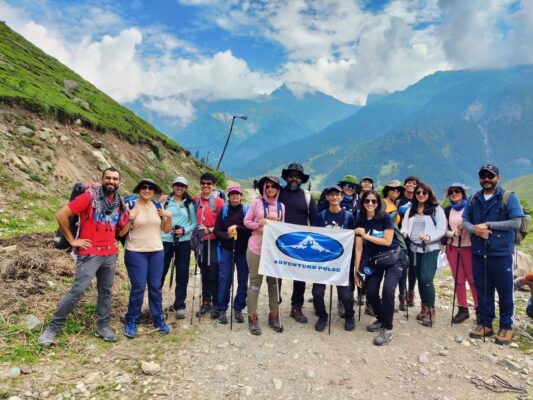
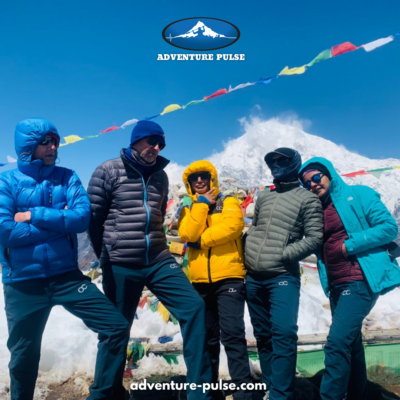
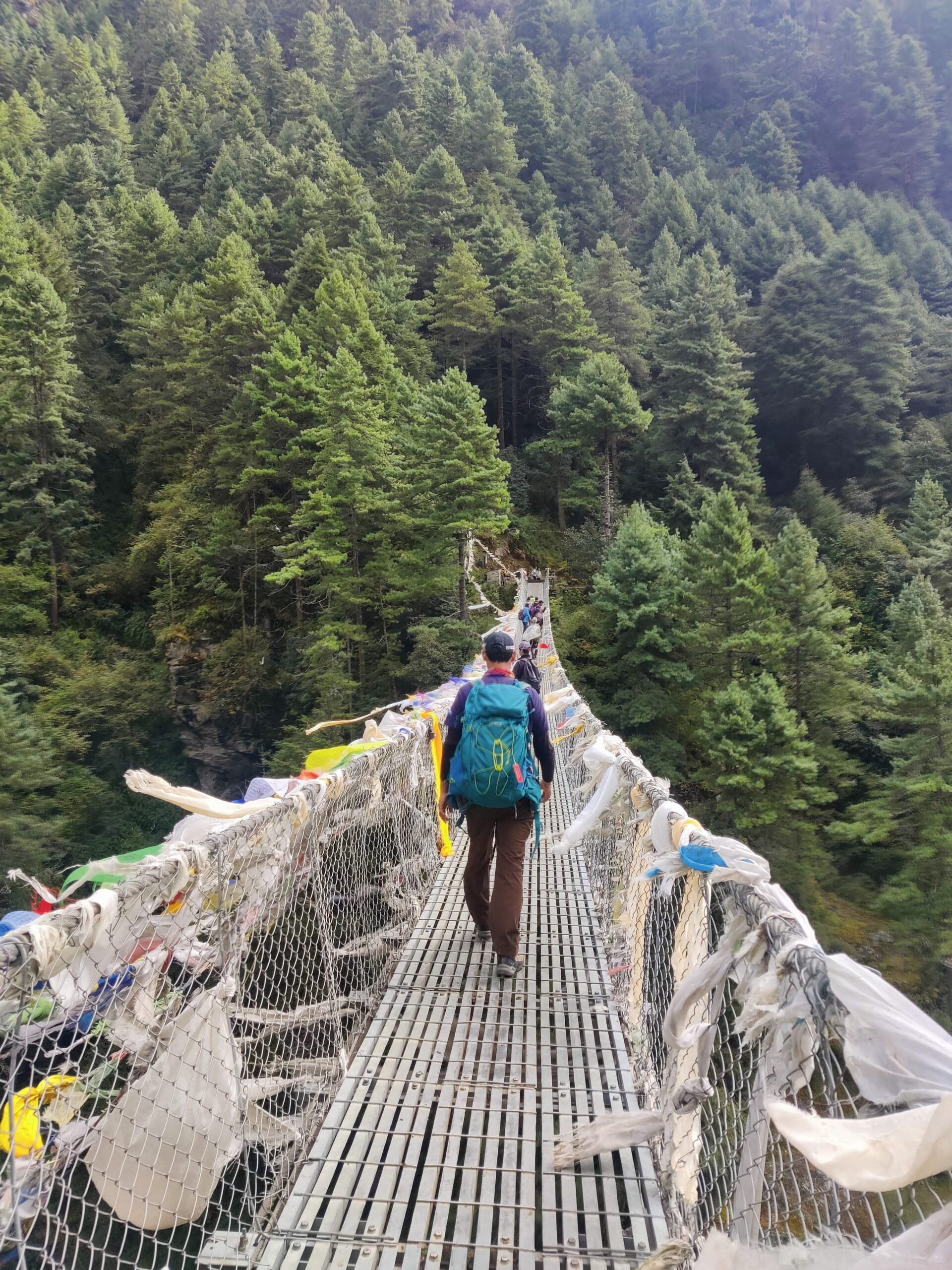

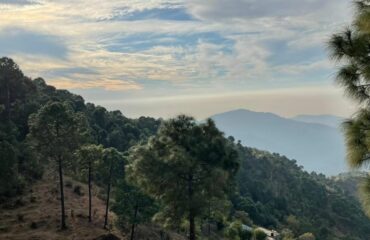

[…] THE EVEREST BASE CAMP – NEPAL CALLING! […]